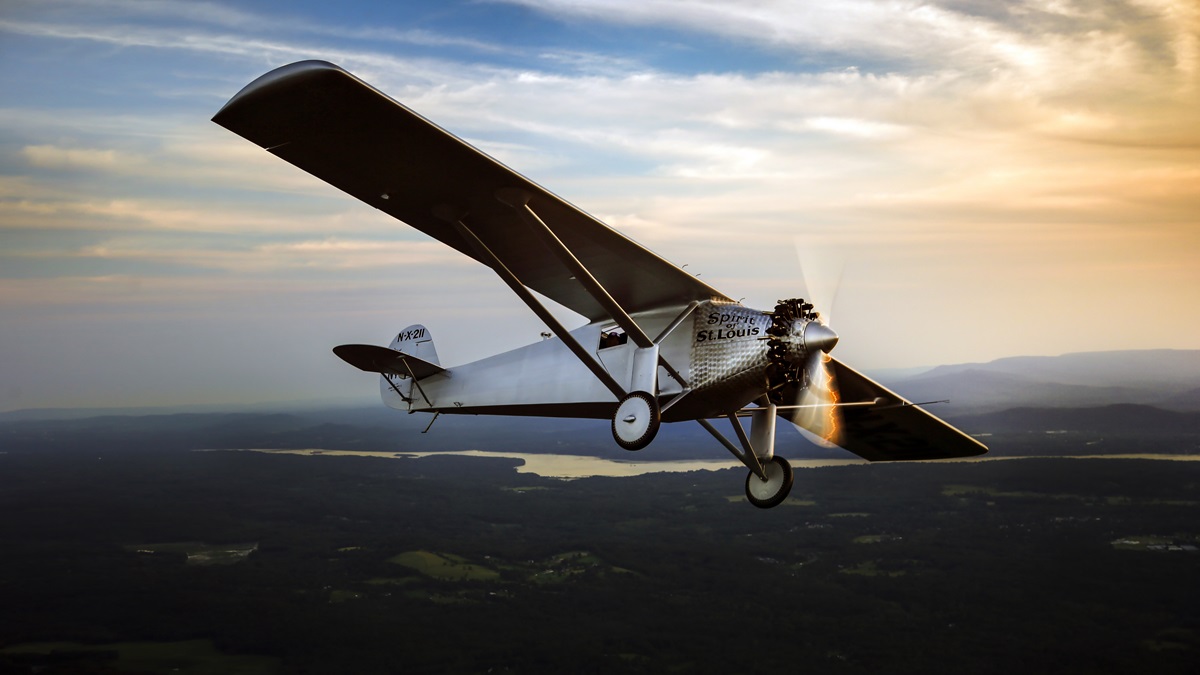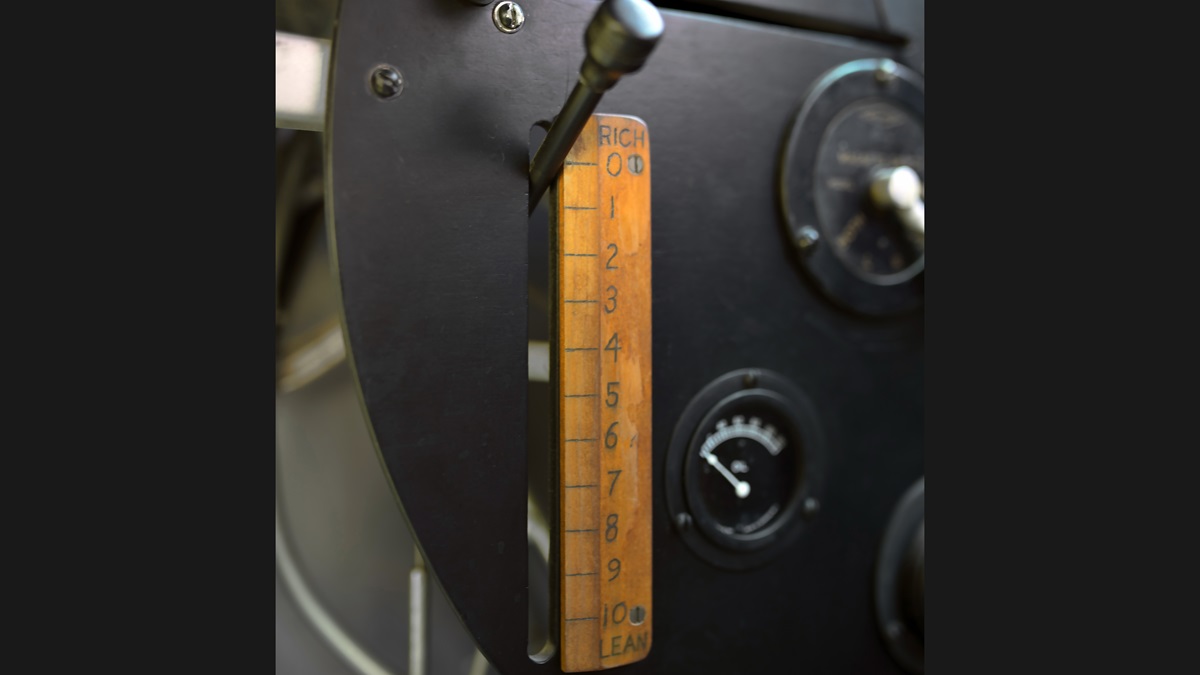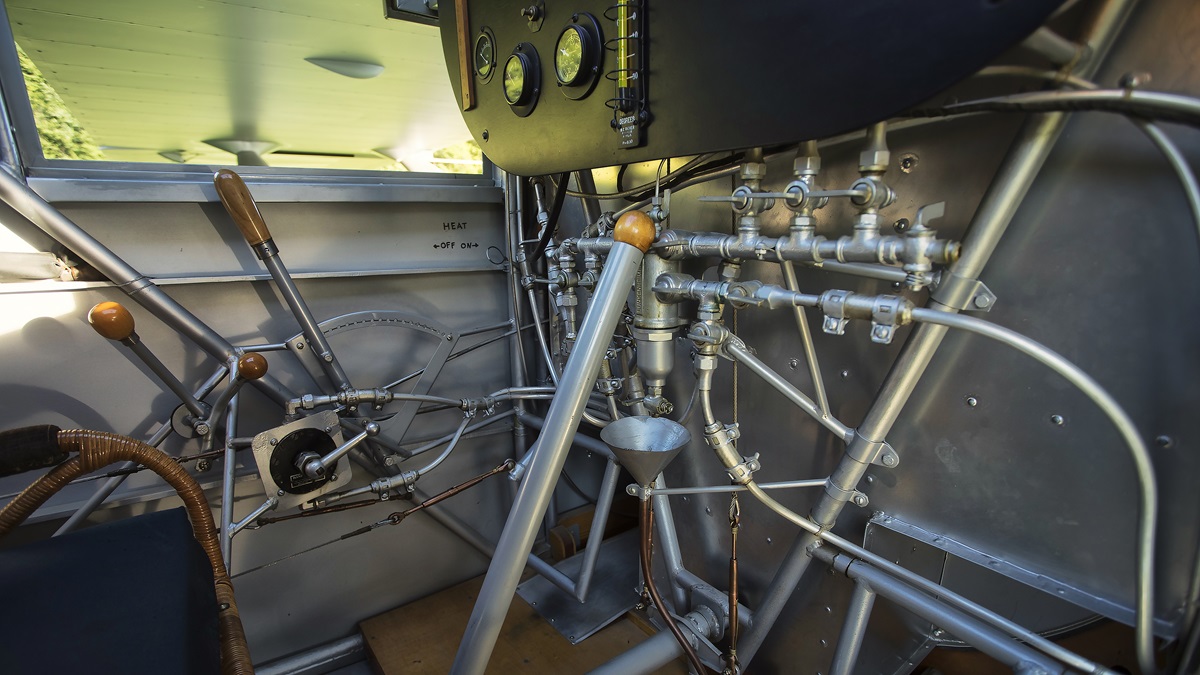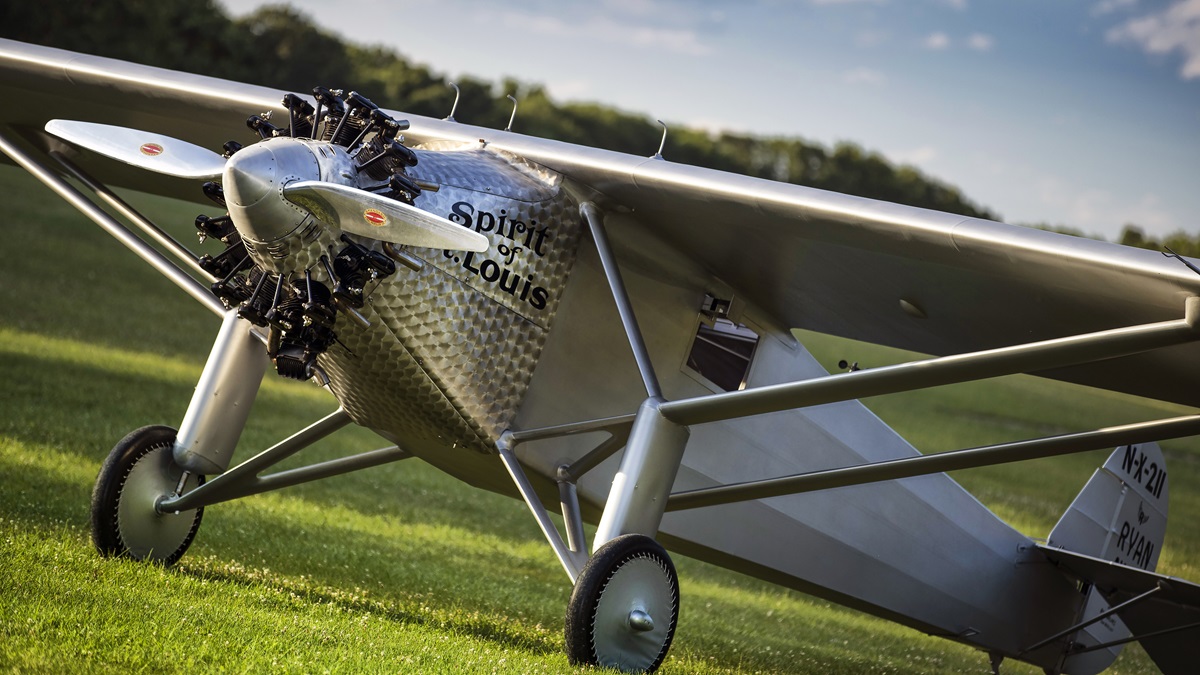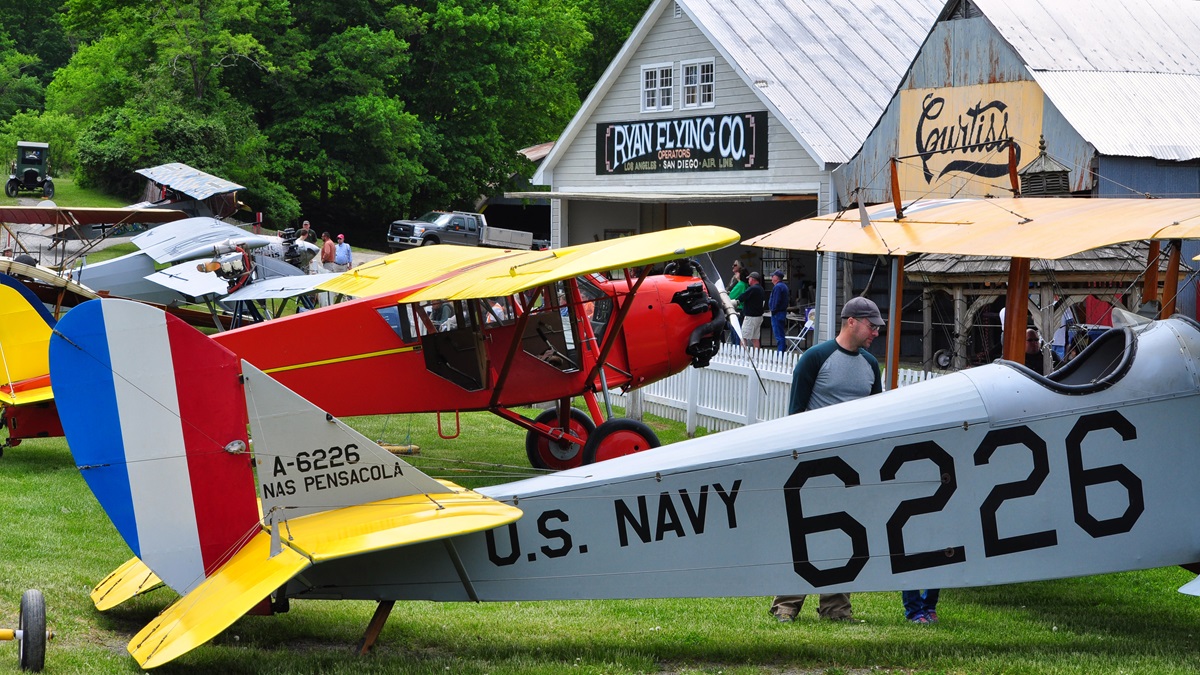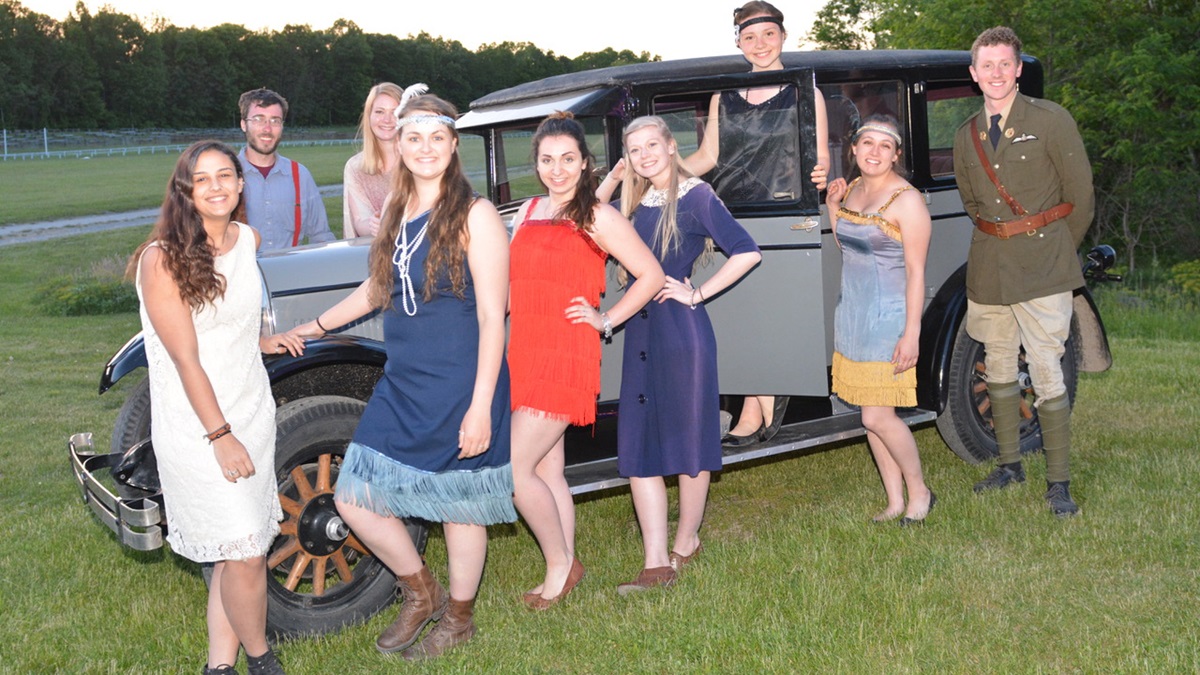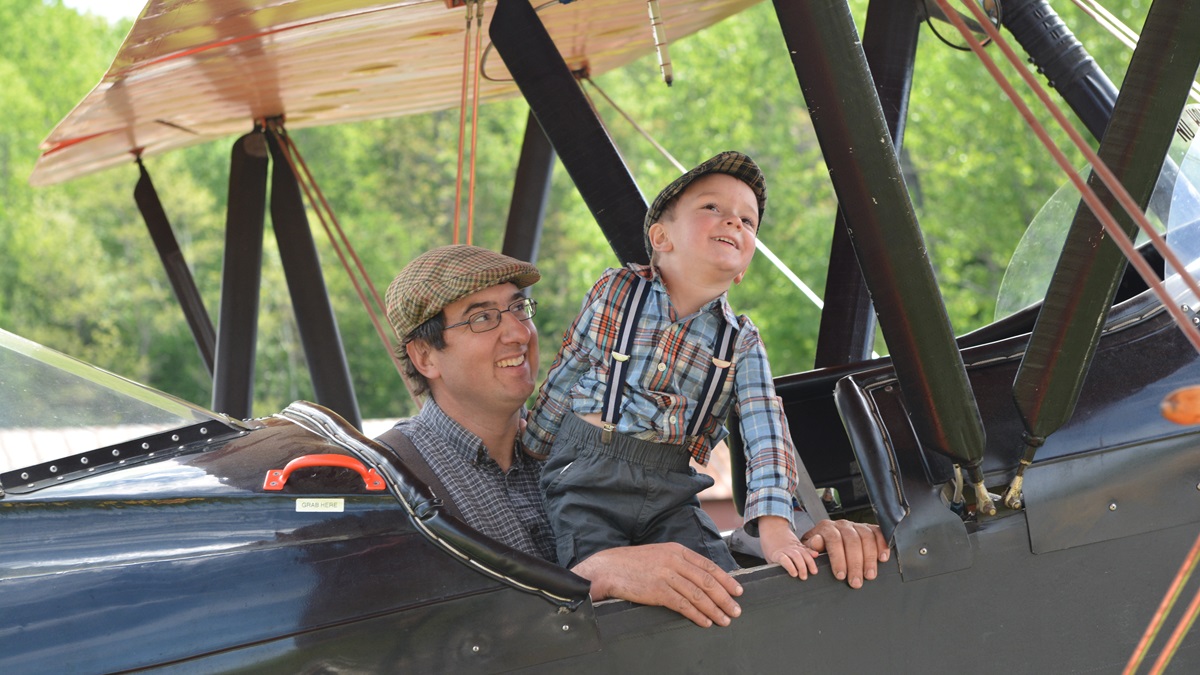Doing the Lindy Hop
Celebrating the 90-year anniversary of Lindbergh’s epic flight
It's been 90 years since the Spirit of St. Louis bounced down the runway at Roosevelt Field in Long Island, New York, heading toward Paris, the extra-long wing bending under 450 gallons of fuel. No one really believed the lanky young Minnesotan would complete the flight and win hotelier Raymond Orteig’s prize and $25,000 incentive, just as none of the previous attempts had been successful. No one believed it except the pilot himself, who even later admitted to doubts on that long, 30-plus-hour flight in the blind. But when Charles A. Lindbergh set the Ryan NYP down on the field in Le Bourget, France, he changed history, and his aircraft became the iconic symbol of the new aviation age.
Developers covered Roosevelt Field with a shopping mall in the 1950s. The Spirit of St. Louis last flew in 1928, when Lindbergh landed in Washington, D.C., and donated it to the Smithsonian Institution. Today it hangs inside the Smithsonian’s National Air and Space Museum, out of reach, silent for almost 90 years. The aluminum cowling is now a deep, dirty gold. The flags of all the countries it had flown to, and the fabric torn by throngs outside of Paris, are patched. While this iconic aircraft will never fly again, somewhere in upstate New York a young dreamer started an aviation museum dedicated to keeping the Golden Age of aviation alive—and flying—and began work on a replica of the Spirit of St. Louis.
Cole Palen was born in 1925, two years before Lindbergh would fly across the ocean. The boy from Poughkeepsie, New York, would delight in vintage aircraft and dream of one day creating an airfield with vintage airplanes like those he grew up watching fly and making models of. After a successful career, Palen established the Old Rhinebeck Aerodrome in Red Hook, New York, with the motto “It isn’t an airplane if it doesn’t fly.” The living history museum has continued flying vintage aircraft since it was founded in 1958—including the oldest aircraft still flying in the United States, a 1909 Blériot XI.
In the 1970s, Palen discovered a Wright Whirlwind J-5 engine, nearly the exact engine on the original Spirit (the original engine was a J-5AB), and began the slow process of producing a replica of Lindbergh’s Ryan NYP. But because the original was built on a shop floor in just two months before the historic flight, no plans existed. Palen’s efforts seemed to die with him in 1993—until his old friend, retired flight engineer Ken Cassens, took up the cause. Studying the original by climbing a cherry picker set up for him inside the Smithsonian, and through trial and error and pure determination, Cassens finally finished his magnum opus in December 2015.
The replica
In late 2015, the new Spirit of St. Louis sat at Old Rhinebeck; the wings weren’t yet covered and the spinner sat on the hangar floor, but builder and Pete Seeger lookalike Cassens had replicated pretty much everything except fuel capacity. This Spirit holds only 55 gallons, primarily because it was never meant to hop over an ocean. And the empennage fabric is solid, not ripped. “Our airplane is a representation of the airplane as it left New York for Paris,” Cassens said.
There’s a plain wicker seat bolted behind small, square side windows, and there’s another window overhead. There’s a simple stick, simple rudder pedals, and a compass mounted on the ceiling, just in front of a black instrument panel that conceals the nose tank—and any forward view, for that matter. In case of a crash Lindbergh didn’t want to be crushed between the engine and fuel tank, and, anyway, he’d be flying mostly by instruments. So few instruments, though: airspeed indicator, altimeter, turn-and-bank indicator, tachometer, and oil pressure and oil temperature gauges. About as many as a Piper Cub. No directional gyro. (But the turn-and-bank indicator needle is gyro-activated.) “All the instruments are exactly the same kind as Lindbergh had,” Cassens said. Three even came from the Smithsonian. Below the panel runs a precise tangle of plumbing with oh so many fuel selectors. It’s a master class in fuel management. Other than the small retractable periscope on the left side, mainly for takeoff and landing (which Cassens terms “useless” now that he’s flown the aircraft), and tubing and the bare fabric stretched around it, there’s nothing else to see here.
First flight
In May 2016, the Spirit of St. Louis was ready for its close-up. The gala invitation said period costume, and a crowd of swells and flappers wears top hats, boas, and cloches. One bald man sports calf-high boots, Nomex flight suit, and a World War I-style German garrison cap. He says he doesn’t know what he’s supposed to look like.
On the other side of the fence, on the turf runway, sits the new Spirit of St. Louis, clean, untouched, silent. Assembled. It’s surrounded by working antique automobiles—even a Ford Model T fuel truck—plus a few dignitaries, aviators, and Cassens, wearing a 1920s leather jacket and helmet.
You don’t just crawl into an untested, one-of-a-kind airplane and take off. Not even if you’re Charles Lindbergh. “We have a Curtiss Robin here of the same vintage,” Cassens says, explaining that he used it as his training platform. Tandem cockpits, dual controls, no instruments—the height of 1920s aeronautica. “We had a safety pilot sitting in the front, and we put a piece of cardboard between him and myself so I couldn’t see forward, which simulated the Spirit of St. Louis. We did that for several hours.”
Cassens goes through the checklist. A young man, wearing a peaked cap and suspenders, grabs the propeller and pulls it through a couple of times, working oil into the cylinders.
We wait. The young man again grabs the prop blade and pulls down, this time really putting his suspenders into it. The prop spins around once, the engine kind of burps. He does it twice more. The crowd holds its collective breath. A couple of tries later, smoke belches from the exhaust ports as the engine rumbles to life. The crowd applauds and yells.
Cassens pulls back on the power and lets the engine warm. Once the young man removes the chocks, Cassens advances the power and the radial resumes a deep, throaty roar, and the Spirit of St. Louis rolls forward. The crowd yells more, like taxiing is a huge deal, and yells even louder when the airplane turns right and taxis before us, its tail skid bouncing on the turf. It rolls onward, finally disappearing behind a grassy knoll. When the engine grows quieter, cheering turns to excited chatter, then waves of concern roll over the crowd. He’s going through the run-up. The engine gets louder. Then quieter. Then louder. It remains loud. And it grows louder still.
The Spirit of St. Louis breaches the knoll. The wheels break with the turf tantalizingly close; the long wing flashes barely 20 feet overhead while the engine drowns out the crowd. “What you’re acutely aware of is the sound,” said Dan Taylor, WCBS-FM radio personality, airplane historian, and longtime Rhinebeck volunteer. “You’re hearing 1927 and seeing 1927. It’s the exact smokestack, the same engine. You hear the same thing that someone fishing at St. John’s, Newfoundland, would have heard flying overhead,” he adds. “That sound as he flew it down the runway, that’s the sound you would have heard in 1927.”
The Spirit of St. Louis banks gently left, climbs steeply, starts circling the field, reaches pattern altitude, and continues climbing, finally forming up with the Curtiss Robin for a photo session. A few orbits later it breaks formation and dives into a low pass down the field. The crowd roars, then the Spirit climbs again. More passes follow, showing off the top of the wings, the bottom of the wings, the speed, the noise.
A new Spirit
The sun starts setting behind rain clouds. The Spirit of St. Louis carries no landing lights, and Old Rhinebeck is an unlighted aerodrome. After one final pass, Cassens lines up, pulls off power, and crabs the nose to the right until the wheels touch the grass—on the centerline, if the field had one. The airplane straightens and the skid drags it to a stop, then it taxis back to center stage. A couple of minutes later the engine dies cleanly and Cassens emerges feet first, smiling and waving to the flappers and swells cheering the first public, nonstop, solo test flight of the new Spirit of St. Louis.
“I got a little bit off the centerline, but I straightened out once I got going. That was my first flight taking off from that direction,” Cassens says. “The talk about it being very unstable is overexaggerated. If you compare it with a Piper Cub or Cessna 150, yeah, it’s relatively unstable, but as far as the older airplanes go it’s relatively stable.” The Spirit of St. Louis came before harmonized controls, so it’s all relative. “You have to fly it constantly, but it’s controllable and docile through the stalls, so it handles pretty good,” he adds.
Cooling off quietly on the grass, the nose of the new Spirit of St. Louis turns pale amber. Like it would have after Lindbergh’s initial test hops in the original Spirit of St. Louis. Before two nonstop cross-countries. Before the solo transatlantic hop. Thirty-three and one-half hours that changed the world, which turned it solid gold.
Phil Scott is an aviation writer and pilot living in Poughkeepsie, New York. AOPA Senior Features Editor Julie Summers Walker contributed to this story.
